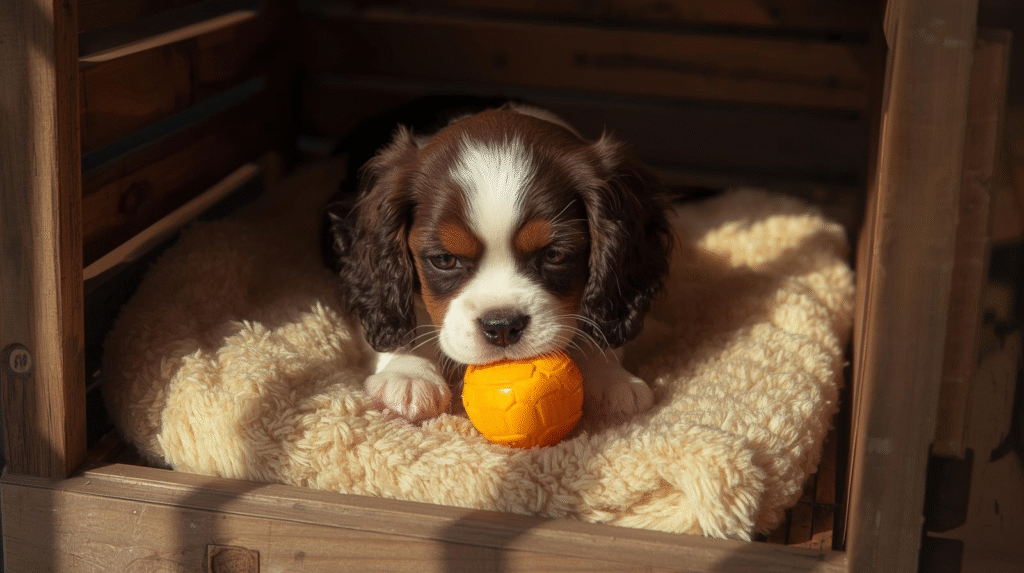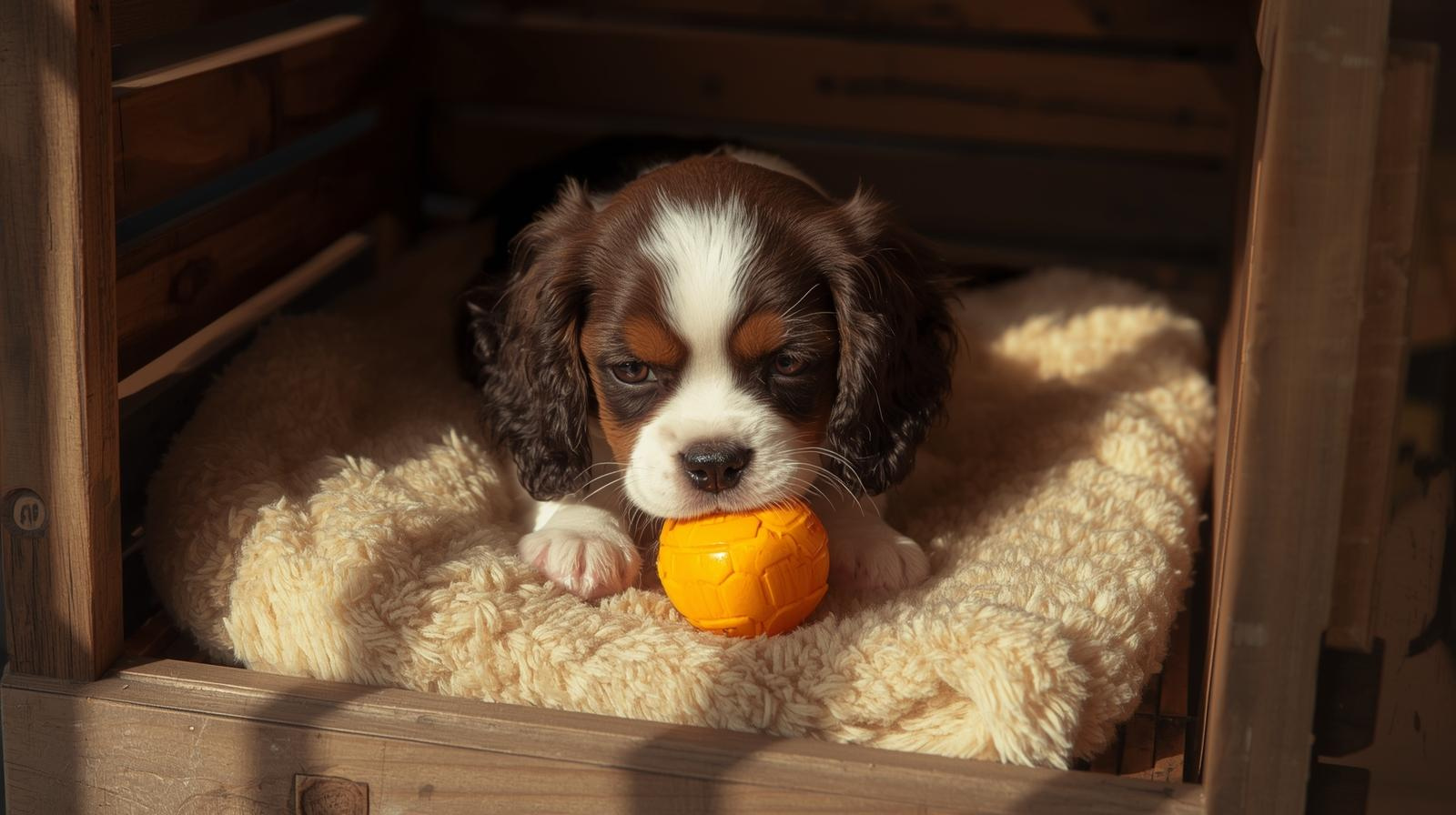Cavalier King Charles Spaniels are affectionate, gentle dogs who thrive when given structure and security.
One of the most effective ways to provide this is through crate training. Far from being a form of punishment, a crate can become your Cavalier’s safe space — a den where they can relax, feel secure, and develop good habits.
Why Crate Training Matters
Crate training is not simply about convenience for owners. It’s a proven method that benefits both you and your dog.
Cavaliers are sensitive and eager to please, but without boundaries, they may develop habits such as destructive chewing, accidents indoors, or separation anxiety. A crate helps prevent these behaviours by giving your dog a clear place of their own.

Key Benefits of Crate Training for Cavaliers
1. Provides a Safe Haven
Cavaliers are companion dogs by nature, but they also appreciate having a cosy, quiet spot to retreat to.
A crate mimics the feeling of a den and gives your dog a sense of security. This is especially important in busy households, where a Cavalier can easily become overstimulated.
2. Aids with House Training
One of the most practical benefits of crate training is housetraining. Dogs instinctively avoid soiling their sleeping area.
By using a crate correctly, you encourage your Cavalier to hold their bladder and learn a regular toilet routine.
3. Prevents Destructive Behaviour
Cavaliers are curious and often chew when bored. Leaving them unsupervised with free access to the house can result in damage to furniture, shoes, or even injury from chewing unsafe objects.
A crate keeps your dog safe when you’re not able to watch them.

4. Reduces Anxiety and Overexcitement
Many Cavaliers struggle with separation anxiety. Introducing a crate helps reduce stress when you leave the house, as your dog learns that time alone is normal and safe.
It can also help calm an excitable Cavalier after walks, play, or visitors.
5. Useful for Travel and Vet Visits
A crate-trained Cavalier is much easier to transport safely in the car. They are also less stressed when staying overnight at a vet or boarding kennel, as they are already familiar with the concept of resting in a confined space.
Tips for Successful Crate Training
- Introduce gradually – Let your Cavalier explore the crate on their own before shutting the door.
- Make it positive – Use treats, toys, and praise to create positive associations.
- Keep sessions short at first – Slowly increase the time your dog spends inside.
- Never use the crate as punishment – It should always feel safe, never like a place of isolation.
- Be consistent – Routine is vital; use the crate at the same times each day.
Final Thoughts
Crate training is one of the most valuable skills you can teach your Cavalier King Charles Spaniel. It creates a safe environment, supports house training, reduces anxiety, and ensures your dog is safe when unsupervised.
Done correctly, a crate becomes a place your Cavalier loves — not something to be feared.

